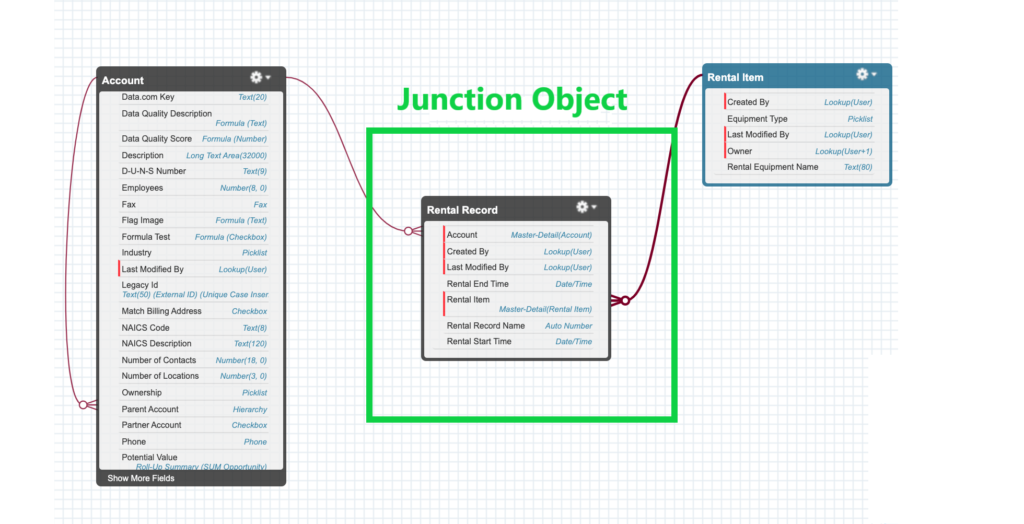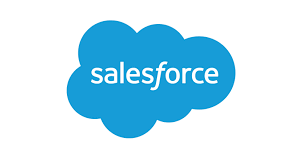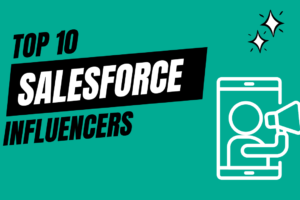
30 Salesforce Admin Interview Questions and Answers
It can be challenging to prove your technological proficiency in a job interview. In order to prove your command of a subject, you usually have to go into considerable depth, which is typically not what interviewers are looking for. It’s important not to come out as prolonging your own interview!
The goal is to answer the question clearly and thoroughly while showcasing your knowledge and avoiding excessive repetition. You should pause briefly to let the interviewer continue on to the next topic and let them know you could go into further detail if they’d like.
Try to include an instance of use that you’ve encountered with the functionality. Mentioning a hypothetical use case that the interviewer’s company might have in light of your knowledge of their business or sector is an additional choice.
It’s important to note that not every interviewer will be an authority on the technology they are questioning about. As they may not be administrators per se, but rather managers, HR reps, or application stakeholders, it’s usually preferable to adjust your responses to fit their experience level. They only want to know how much you know; they’re not attempting to certify you. During an interview, your professionalism, self-assurance, and manner all matter.
Here are a few possible questions for a Salesforce Admin interview that you should be ready to respond to, keeping that background in mind.
The topics into which the questions are classified are as follows
- Data Security and Record Sharing
- Data Relationships and Field Types
- Process Automation
- Communities
- AppExchange
- Change Management
- User Interface & Reporting
- Data Management
Data Security and Record Sharing
1. What is a Profile?
Users’ access to certain records and their actions related to them are determined by their roles and profiles combined. Users can only access certain objects and fields through their profiles, which are always necessary. They also decide which user rights are granted to add, modify, and remove records.
2. What is a Role?
Although they are specifically optional, using roles is a good idea. The main function of roles is to share records with users. You can utilize roles in sharing rules to control which records (and whether they’re Read-Only or Read/Write) users can view when organization-wide default sharing is set lower than Public Read/Write for an object.
3. What is a Permission Set?
Profile enhancements are permission sets. They are used to provide users more permissions beyond what their profile grants and typically have the same settings. One advantage is that you don’t have to make various profiles in order to provide users slightly varied access.
Administrator overhead is decreased as a result. Permission sets are the “extra” permissions that fewer users require, whereas profiles are the basic permissions that more users share. For easier and more consistent administration, you may also use Permission Set Groups to put together multiple permission sets according to job function. There are helpful articles on the subject from Salesforce and Trailhead.
4. What is changing regarding Profiles and Permission Sets?
Salesforce has declared that starting with the Spring ’23 release, profile permissions would be withdrawn as end of life (EOL). Although profiles will remain, their permissions will be terminated, and access to permissions will be limited to permission sets.
What is going to stay on a profile: Individual connections
- Login hours and IP ranges
- Defaults Types of records and applications
- Page layout assignment: We will not invest in extending page layout assignment to permission settings because App Builder and Dynamic Forms are the way of the future.
After EOL, the following will only be accessible on permission sets:
- Permissions granted by the user (system and app)
- Object Create, Read, Update, and Delete [CRUD] rights
- Field-level security [FLS] permissions
- Tabs
- Types of records (not defaults)
- Apps—not the default ones
- Access to connected apps
- Apex Classes
- Pages with Visualforce
- Particular authorizations
By setting Field-Level Security for Permission Sets During Field Creation under User Management Settings and moving permissions from profiles to permission sets, administrators can now start modifying the security model in advance of the final change.
5. How are Public groups and Queues different?
Permission sets are analogous to profiles, and public groups are equivalent to roles. To allow users to share records with one another, an administrator can form ad hoc groups of users and name them either individually or according to roles.
Directors indicate that sharing records with users at a comparable level is a regular use case. Directors are unlikely to be subordinate to one another in the position hierarchy because they are most likely dispersed throughout the organization. On the other hand, an administrator might establish a public group and share documents with it, including all director responsibilities.
While queues and public groups are both customized user groups (named either individually or based on roles), queues are used for record ownership instead of sharing rules. The traditional usage case management, where you would like to assign an open case to a group of people so that the first person available takes care of it. All custom items and a large number of standard objects have queues.
Data Modeling
6. What is a Lookup Relationship?
You can connect records to one another and create a parent-child model by using lookup relationships. Usually, this is carried out between various objects (like contacts and accounts), but it can also be done with a single object (like parent accounts). Relationship fields facilitate reporting by enabling users to define the relationships between records.
7. What is a Master-Detail relationship?
Although they have a few unique characteristics, master-detail relationships are comparable to lookup relationships. Firstly, roll-up summary fields can be built with master-detail. Because there is no record owner for the detail (or child) record, this relationship type also has an impact on security. It receives visibility by inheritance from the parent or master record. That may limit you or be incredibly helpful, depending on your use case.
8. What is a Roll-Up Summary field?
In a master-detail relationship, the master side has a roll-up summary field. Administrators can use it to instantly aggregate data from related detail records, such as counting them or adding up a numerical value associated with them. The main benefit of a master-detail connection is the availability of roll-up summary fields within the relationship.
9. What are different types of fields?
The kind of data you foresee users entering into each field is defined by the field type. Text, numbers, dates, currencies, etc. are a few examples. Because it impacts your capacity to report on and evaluate the data, it is crucial that the field type match the data. You could, for instance, keep numbers in text fields, but doing calculations on them would become too difficult.
10. What are Validation Rules?
You may support the data integrity of your organization by enforcing specific business logic using validation rules. On an object, you can set restrictions that prevent it from existing.
For instance, you can add a validation rule to prevent users from marking opportunities as Closed Won if the account does not have a billing address. This way, if a user tries to edit the Opportunity record, the validation rule will prevent it from happening and instead display an error message with instructions.
11. What if you need Roll-Ups on a Lookup relationship?
There are situations when you want to combine child data on a parent record but master-detail isn’t suitable because of security constraints that don’t fit your use case. In some cases, you might mimic the functionality of roll-up summary fields with code or with Flow Builder.
To make configuration simple, you’ll probably want an app from the AppExchange. Actually, installing an app like this in your organization should be one of your first priorities (first in a sandbox, of course.)
12. What is a Junction object?
An object that is intended to build a many-to-many relationship with two distinct parent objects—typically with master-detail relationships—is referred to as a junction object. Salesforce does not have something called a “junction object”; rather, it is a term that is applied to an object according to its role in the data model.
An example of a popular use case is a school’s classes. The school will feature a large student body, a wide range of courses offered, and connections between classes for each student.

Process Automation
13. What is a Flow?
Flow is the main descriptive automation tool for administrators. Flow is capable of carrying out operations including executing Apex code, sending emails, sending outgoing messages, and creating, modifying, and deleting records. Additionally, Flow is the only declarative automation platform that enables administrators to create unique screens for user interaction, which can significantly enhance the user experience.
The three most typical methods that flows are started are by schedules, Screens, or record modifications.
Admins can control the sequence in which flows execute using Flow Trigger Explorer, ensuring that automation is effective and does not result in conflicts. Moreover, administrators can create multi-user, multi-step automation with Flow Orchestrator.
14. What is happening with Workflow Rules and Process Builder?
Workflow rules and Process Builder will be retired, according to a statement from Salesforce. Flow’s predecessors, the declarative tools, are no longer required because Flow can perform all of their functions.
It’s crucial to understand that, as of Winter’23 and Summer’23, respectively, new workflow rules and processes cannot be established; instead, they continue to function as they always have and can be modified, activated, or deactivated.
Admins should carefully go over the options and factors while using the Migrate to Flow tools. It is nonetheless essential for an admin to comprehend workflow rules and processes because they are typically present in organizations they operate with. Check out Process Builder vs. Flows – Become the Ultimate Admin and Workflow Rules vs. Process Builder (Feat. APEX & Flow) for more reading.
15. What is going on with AI?
For many years, Salesforce has offered a range of Einstein AI solutions, most of which have been analytical and predictive tools. GPT tools are generative AI (i.e., they can produce auto-generated material) thanks to recent advances in AI.
The fact that GPT products learn using what are known as large language models (LLMs) is likely the most crucial piece of information. The Einstein GPT Trust Layer, which is employed by Salesforce’s AI Cloud, protects data inside a Salesforce organization while enabling AI application.
16. What is an Approval Process?
For really particular automated use cases, there is an approval process. It is utilized, of course, when something needs to be approved and keeps track of who approved or refused what and when. Notifying approvers, preventing updates to the record, conditional logic for approving, and other approval models—such as all approvers or any approvers—are all covered.
17. What is Apex?
Apex is the programming language used to write Salesforce code. Although it’s a tool more suited for developers than administrators, code can expand your organization to accomplish nearly everything you need.
18. What is Experience Cloud?
You can grant access to your Salesforce organization to your partners and customers through Experience Cloud (previously Community). They can have user accounts and a unique access portal with these special licenses, customized with a variety of Lightning features that can be set up without writing any code. Adding other layers of protection to restrict their access to only the objects and information you choose is likewise a very easy process.
19. What are Great Users?
Those without user accounts in your organization are considered guest users. Because they don’t need to log in, they are also known as unauthenticated users. Pages (and data!) can be made accessible to the public. Even more, these users are able to add and modify records.
Since guest user licenses are free, using this functionality can answer numerous use cases in an economical manner, however there are obviously many factors and limits to weigh. View the National Aquarium’s usage of guest user licenses to enable people to control their email selections.
Experience Cloud, guest users, and screen flow can be combined by administrators to address some rather complicated use cases, like the National Aquarium reservation and educational experience apps.
AppExchange
20. What is the difference between Managed and Unmanaged Packages?
Installing apps from the AppExchange involves downloading packages, which are collections of all the components needed to run the program properly. Whether or not the package is managed is up to the app developer.
Unmanaged packages function essentially the same as those you have built yourself within the organization once they are installed. In contrast, controlled package components—which resemble smartphone apps—are locked down to prevent editing.

21. What is a Change Set?
The code and associated information are not viewable or editable by you. Automatic solution upgrades are possible from the provider. A change set is quite close, though not quite the same as an AppExchage package. It’s an assortment of elements that you wish to move across associated organizations (usually from a test environment to a production environment, but it can also be moved between test environments and other configurations).
In addition, the DevOps Center has been introduced by Salesforce with the goal of facilitating the collaborative development, testing, and implementation of customized solutions throughout the Salesforce platform. These solutions include automations, applications, and experiences that link to real-time customer data.
22. What are the different types of Sandboxes?
Partial, Full, Developer Pro, and Developer sandboxes are available. What information is added to the sandbox when it is created or updated makes a difference. The developer versions begin with no data at all (though they can differ in how much data they can hold), while the partial and full versions begin with some or all of your production data. It’s crucial to remember that they might be updated differently as well: developer every day, partial every five days, and full every 29 days.
User Experience
23. What are Record Types?
You can make different sorts of records for any object by using record types. They have authority over picklist values, page layouts, and other business logic. A good example would be a call center; in circumstances requiring mortgages as opposed to auto loans, you would probably need to have distinct fields displayed and necessary.
24. What are List Views?
The searches you can show your users to assist them in reviewing the records that catch their attention are called list views. Usually discovered when a user clicks on a tab within an app, although they may also be seen on other Lightning pages via Lightning components. List views can show the relevant columns and be filtered according to how they are needed. Additionally, users can set each tab’s default list view.
25. What are Reports and Dashboards?
List views and reports are comparable, but reports are far more powerful. They are able to compile data and provide summaries. Dashboards make it possible to visualize the data.
26. What is a Page Layout?
A page layout essentially determines which fields are visible for a particular record, but it has further control. They can also decide which fields need to be filled out or remain blank. Furthermore, buttons, related lists, and a few other features are managed by page layouts.
Note that with the release of Dynamic Forms, controlling Lightning pages and page layouts will undergo a radical change!
27. What are Lightning Components?
The enchantment of Lightning Experience really comes alive in the lightning components. On Lightning pages, they are modular features that may be added, removed, or reorganized. These include the path display, highlights panel, Chatter elements, record information, and more. In addition to the hundreds of pre-made Lightning components, you can also design your own or obtain them via the AppExchange.
28. What is the difference between a Page Layout and a Lightning Page?
Lightning components that show its content (mostly the details and related list components) essentially represent page layouts in Lightning Experience, but Lightning record pages contain much more.
All other Lightning components that you can use are managed by the Lightning page. Additionally, you have the option to conditionally display each component. The user’s profile or information in the record, for example, may serve as the basis for the conditions.
Home pages and app pages are two more varieties of Lightning pages. Although the pages won’t include any individual entries, they might have Lightning screen flows, charts, list views, and other features that improve the user experience! Almost anything you can think of to improve the experience for your users is the limit. It is even possible to customize how Lightning sites behave on desktop and mobile browser instances.
Data Management
29. What is a Data Loader?
The Salesforce Data Loader is the original method, while there are numerous more ways to import and export data from Salesforce in bulk, such as using the Import Wizard, exporting reports, and using third-party applications like dataloader.io. It’s a free client program that you may download that has all the features you require. Consider looking into the Data Management Trailhead module.
30. What is a Custom Metadata Type?
Custom metadata types were once mostly a developer’s tool, but administrators are now finding them to be valuable as well. Similar to custom objects, custom metadata stores information about your organization rather than information for it.
Good use cases include things like sales targets, blackout dates, discount rates, etc. You can use the metadata in automation, formulae, and other applications. Additionally, it is automatically accessible in any sandbox you create or update because it is metadata rather than data.



